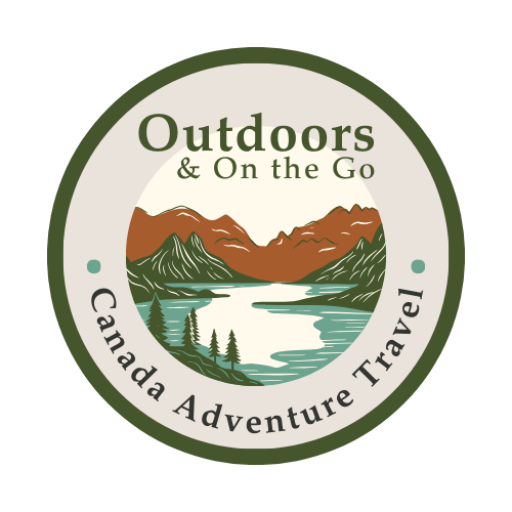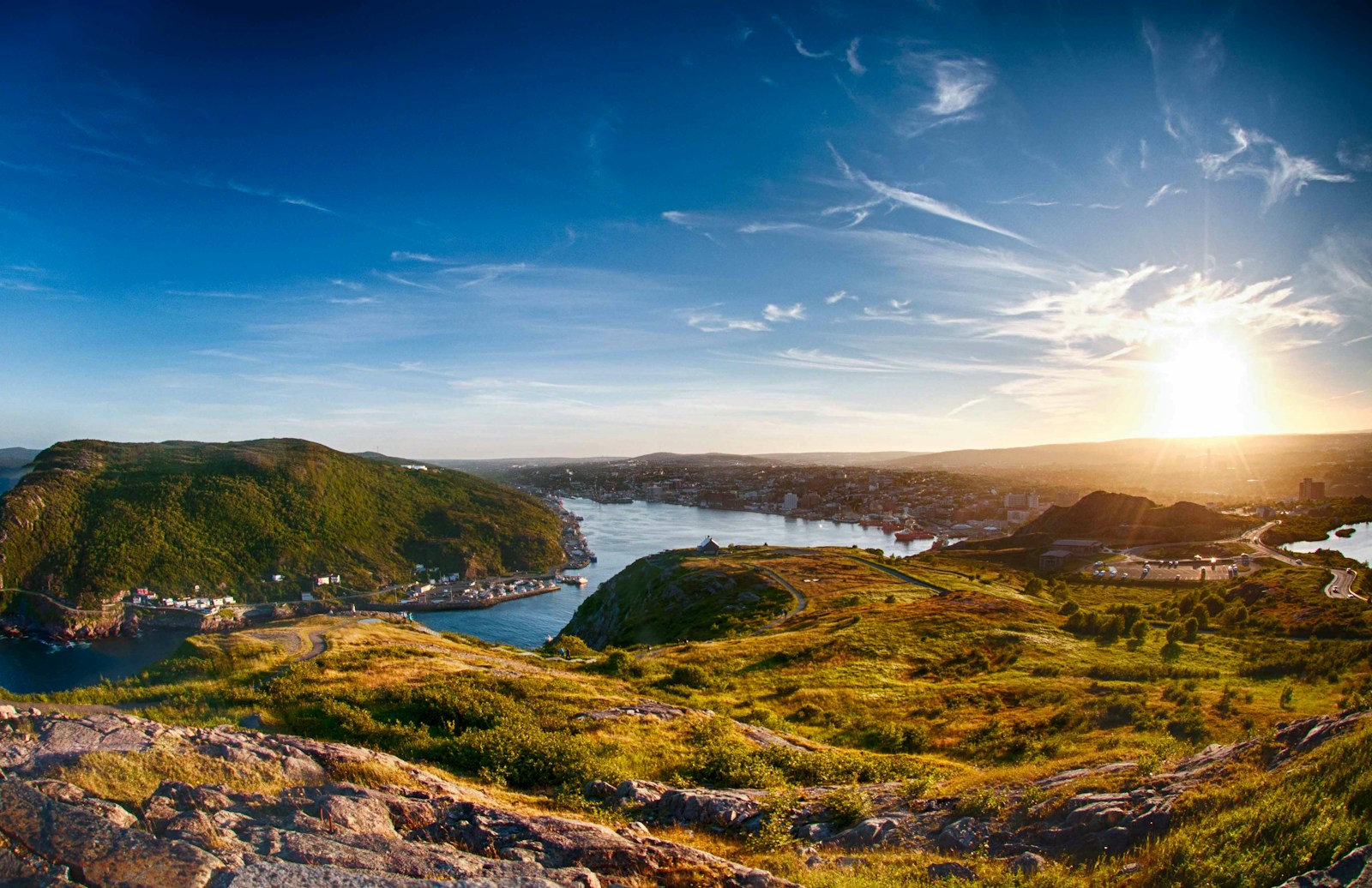Newfoundland is a big, wild place ready to be explored. With this Newfoundland travel guide, I will share with you my tips for traveling around Newfoundland like how to get here, where to stay, how to stay well fed, and areas that deserve your attention.
Newfoundland is my favourite place in the whole world, not that I have been everywhere, but enough to know that what is here, is special. Newfoundland is that talked about place in Canada, where many are from but few have been. It’s a place with vast, untouched wilderness as well as a feeling all it’s own. While living and guiding here over the last 10 years I have explored many regions and look forward to seeing many more.
Ready to start planning? Let’s go!
Ads are how we keep our blog free for you to enjoy. We also use affiliate links; if you make a purchase through them, we may receive a small commission at no cost to you.
What to Pack for Newfoundland: Your Essential Checklist
Newfoundland’s unpredictable weather and rugged landscapes mean smart packing is key! Whether you’re hiking in Gros Morne, whale watching in Twillingate, or road-tripping, the right gear will keep you warm, dry, and ready for adventure.
🚀 Want a printable checklist? Grab your free Newfoundland Packing List here!
A Bit About Newfoundland Geography
Before you start planning with this Newfoundland travel guide, let’s do a brief geographical orientation to the island to help you get your bearings. There are three main regions, West, Central and East with the capital, St.John’s known as ‘town’, in the far east. Gros Morne National Park is on the far west while Terra Nova National Park is in the central region.
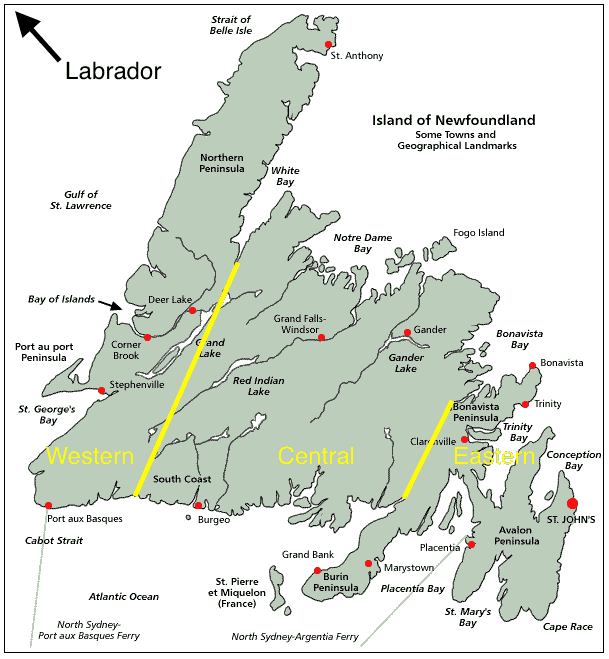
Understanding Newfoundland’s size is crucial for planning. The island covers 108,860 km²—comparable to Iceland, which is 103,000 km². While travelers typically spend 10-14 days exploring Iceland, Newfoundland requires a similar timeframe just to scratch the surface. Unlike Iceland, there is no “ring road” to efficiently navigate the entire island, meaning road trips require more planning and time.
To explore Newfoundland, you will need a vehicle. Plan to rent a car, drive onto the island via ferry, or join a tour that includes transportation. This guide is designed for independent travelers, but I will suggest some guided tour options at the end. Additionally, a boat tour is a must to fully appreciate Newfoundland’s coastal beauty and marine life.
Communities in Newfoundland, much like those in island nations, are scattered along the coastline. This means you often have to drive out and back from the main highway (Trans-Canada Highway, or TCH aka HWY 1). However, almost every detour rewards you with stunning ocean views and charming coastal communities, making it well worth your time to take scenic routes.
Getting to Newfoundland: Ferries & Flights
Read the full details in our Ultimate Guide to Getting to Newfoundland.
Ferry Routes
Newfoundland is accessible by ferry from Nova Scotia and Labrador via Marine Atlantic.
- North Sydney to Port aux Basques (year-round, ~7 hours)
- North Sydney to Argentia (seasonal, ~16 hours)
- Blanc-Sablon to Saint Barbe (year-round, ~2 hours)
Book your ferry in advance, especially in peak season, and be prepared for potential weather delays.
Local tip – travel during the day and save money on a berth with beds and a private bathroom. If you must take the night crossing, its very difficul tot get a berth so bring a pillow and blanket as wella s ear plugs and eye mask and grab a big comfy chair.
Flights to Newfoundland
St. John’s (YYT) is the main airport with frequent domestic and international flights. Other regional airports include:
- Deer Lake (YDF) for access to Gros Morne and Western Newfoundland
- Gander (YQX) for Central Newfoundland
- St. Anthony (YAY) for the Northern Peninsula
You will only get direct flights from Canada’s major airports like Edmonton, Toronto Pearson, Montreal, or Halifax. Most flights to Newfoundland will require at least one flight change at one of these hubs.
✈️ Flights via Booking.com – Find and book the best flight deals to Newfoundland on all major airlines.
Renting a Car in Newfoundland
Where to Rent
Car rentals are available at all major airports and in larger towns such as St. John’s, Gander, and Deer Lake. If you are arriving by ferry, you will have to take a shuttle bus to the larger towns to rent a car.
Rental Companies
- 🚗 Car Rentals via Booking.com – most major providers are listed here and you an earn Genius points while supporting our blog!
- Enterprise Rent-A-Car – Available in multiple locations, including St. John’s, Deer Lake, and Gander.
- Avis Car Rental – Found at major airports and downtown locations.
- Budget Car Rental – A good option for a range of vehicles, including SUVs.
- Turo – A peer-to-peer car-sharing platform that may offer more vehicle variety.
Considerations When Renting
- Insurance: Check if your credit card covers rental insurance, or purchase coverage through the rental company.
- Availability: Car rentals can sell out quickly in peak season (June–September), so book well in advance.
- Vehicle Type: Opt for an SUV or a vehicle with higher clearance if you plan to explore rougher roads or coming in winter.
- Drop-off Locations: If planning a one-way rental, confirm the availability and extra cost of dropping off at a different location.
Looking for more Newfoundland travel tips and inspiration? Check out these other posts:
Flexible Logistic Planning
Traveling ALWAYS requires flexibility. There are just too many factors out of your control, so chill out, slow down and just enjoy being in this big, wild place. Put it in your mind before you hit the island, that your plan WILL change. Because it will. Coming into any adventure with an understanding of flexibility reduces stress and helps manage your expectations of the experience. Newfoundlanders are laid back and move slowly for a reason – the environment dictates so much out here, you have to adapt your plan to what is going on around you.
Weather Considerations
No Newfoundland travel guide is complete without some mention of the weather! The weather impacts your trip everyday and being flexible allows you to maximize your experience in the area. On your Newfoundland Vacation, the main weather types to watch for are wind and precipitation. Start by reading our The Best Time to Visit Newfoundland: A Locals Guide post to choose the time of year you will want to visit in.
Be sure to check weather.gc.cain the area you wish to drive to or explore and watch for wind warnings or special weather statements. Places like The Wreckhouse (just north of Port aux Basques where the ferry lands), are notoriously windy (gusts over 100km/hr are semi-normal), blowing transport trucks and RV campers right off the road.
Summits of mountains, like Gros Morne, are sub-alpine with no trees and very exposed meaning high winds and fog make hiking challenging and add additional hazards. Follow all posted guidance on whether or not to hike today. Build in an extra day or two for your stay in an area if you have a big hike planned, (especially Gros Morne Mountain) so you can change days due to weather.
Heed the weather warnings, drive and play accordingly.

Road Conditions
Driving around the island will likely take more time than you expect. This is due to many factors such as your lack of familiarity, the road quality, and also the weather. This is the topic most Newfoundland travel guide’s overlook (because they are not written by locals) but is critical for you to be aware of!
What you really need to know is the roads, outside of the main highways, are pretty rough (meaning cracks and potholes everywhere), twisty and have small, soft shoulders. Newfoundland roads are better than a lot of places in the world with most being paved but due to the extensive amount of freeze/thaw, they are cracked, potholed and bumpy.
If you’re hauling a trailer, be sure to slow down at the bridges, since the joints are pushed up and will sned the trailer bouncing wildly. With such large distances between communities, it is very expensive to repair the roads so you just have to embrace it as part of the experience.
If you adjust your driving accordingly (slow down!) by keeping these things in mind, you will always get to where you’re going safely.
Key takeaways;
- Add at least a day or two to your stay to allow for weather disruptions (boat tours cancelled, fog making driving hard etc.)
- Check the weather each morning and use the marine weather for wind speeds
- Stay put during high wind events (>80km/hr), heavy precipitation events (>50mm) or during heavy fog
- Drive the speed limit or less as the roads are rough, shoulders are narrow, and there’s wildlife everywhere!
Accommodations & Where to Stay in Newfoundland
Newfoundland accommodations vary widely from very ‘rustic’ cabins (read: totally outdated) to extreme luxury; you can pick and choose your level of comfort, but perhaps not the location. Most of rural Newfoundland will have 2-3 star accommodations in the form of cabins and motels in dire need of an update paired with cute AirBnB’s or the standard provincial park. Your options for true luxury are sparse outside of St.Johns, with the exception of Fogo Island Inn.
Here is a break down of accommodation types available:
- Hotels & B&Bs: Available in major towns like St. John’s, Corner Brook, and Gander. Many hotels offer amenities such as free Wi-Fi, breakfast, and easy access to major attractions. Some recommended hotels include:
- Cabins & Vacation Rentals: Great for remote stays with kitchen facilities, perfect for travelers who want a more secluded experience. Consider booking through:
- Airbnb – Offers a variety of unique stays, from seaside cottages to off-grid cabins.
- VRBO – Another great option for private vacation rentals.
- Newfoundland Vacation Homes – Specializes in unique stays across the province.
- Camping: Provincial parks and campgrounds offer scenic outdoor experiences, including serviced and unserviced sites. Some top locations include:
- Additionally, there are some options for free camping if you’re ready to boondock. Check out A Local’s Guide to Free Camping in Newfoundland for tips and locations.
- Read our Best Places to Stay in Newfoundland, Canada blog post for our recommendations of where to stay.
Food Considerations
While the food in Newfoundland is changing for the better, in rural areas (read: most of the island), the food is boring and of lower quality than you may be used to with a heavy emphasis on deep fried. This is due to the remoteness of communities and challenges of food distribution (weather, road conditions, cost of transport etc.). So to help manage your expectations, expect lots of deep-fried and frozen items. It just is what it is. In this section of my Newfoundland travel guide, I’ll give you my tips for eating well when you’re off the beaten path.
Bring Food With You
When I guided in Gros Morne Park and up the Northern Peninsula, and when I travel anywhere myself, I always bring a cooler and grocery bag of items I know I can’t get or do not want to pay the premium for in rural places. If you have dietary restrictions, you MUST bring enough for your trip out to the rural areas. Plan a half day to shop in St. Johns or Corner Brook/ Deer Lake before you head out.
Here’s a quick list as an example;
- coffee (unless you like instant or mother parkers burnt and old at the gas station)
- milk and cream alternatives (coconut, soya, almond etc.)
- hummus + fresh veggies
- trail mix, snack bars, crackers etc.
- anything gluten free, lactose free or similar
- items for 2-4 meals in case there’s nowhere to eat (because you arrived late) or you get tired of the ‘local’ fried food
You can buy some food along the way, most communities have a general store that will have canned and frozen items as well as veggies that keep well (carrots, potatoes etc.) so you won’t starve!
Cook Your Own Meals
In rural Newfoundland, you might need to make some of your own meals. If you are on a tight budget cooking your own meals is always cheaper than eating out. If you have dietary restrictions, it’s best you prepare your own food to keep feeling well. And sometimes, there simply isn’t a place to eat where you spend the night. So for these reasons, you should plan a few meals to do on your own.
Stay at places that have kitchenettes or plan to bring your own portable kitchen. Being more self sufficient will allow you greater freedom to explore more rural areas, get off the beaten path and explore some incredibly beautiful special places. Places like Sop’s Arm to camp at the Main River or Francois on the south coast or Englee up north for awesome seaside hiking.
Restaurant Tips
I am gluten sensitive and Will has a dairy allergy plus I have guided clients here who have been vegan and so forth, so we’ve got these tips for you to remember when ordering at restaurants.
- fish is always floured – even when its pan fried – so be very specific with your server about no flour
- vegan is a bit misunderstood (mostly just means vegetarian/no meat out here) so be very specific if you need to (no butter, no honey etc.)
- ask for other potato options if you wish to avoid french fries, everything comes with fries
- all salad dressings are pre-packaged or Kraft type dressings (ranch, thousand island etc.), just so you know. Balsamic, lemon juice or other vinegar style dressings are not common outside the main centers but always ask – I have been surprised before!
- salads are always romane or iceberg lettuce – you will almost never get spinach, arugula or other greens like kale but you can ask (asking let’s people know there is demand)
- read my post about Where to Eat in Western Newfoundland to ensure that when you do eat out, you have a great meal
- there is also a post about the best coffee in Newfoundland here

Best Time to Visit Newfoundland
Most people like to take their Newfoundland vacation when it’s warm, so summers are popular. Summer coincides with when most things in Newfoundland are also open. And Newfoundland summers are lovely, so it is a nice time to come – but it’s also peak season – my main reason to come another time. July and August make up ‘peak season’ so my recommendation is to come before or after that. Read the Best Time to Visit Newfoundland post for full details.
Locals Recommendation
- JUNE – If you want flowers in bloom, animals returning from down south (whales & puffins!), and to see icebergs floating by, then June is for you. The sun is warm but the wind still has a chill, especially from the north and patches of snow hug the mountain sides. You can have trails to yourself, see more wildlife, and catch the locals excited for the season. The bugs aren’t usually too bad and the days are long, it’s ideal for hiking and being outside. Here’s some info about the Northern Peninsula in June.
- SEPTEMBER – If you want warm, September is the month to come. The summer sun has finally heated the ocean so both the water and breeze are as warm as it gets. The bugs are gone, the mushrooms are out and the landscape has a hint of fall. Now, many places start to close on Labour Day, so be sure to call ahead and double check attractions’ hours of operation for later in the month. Some places will open on demand this time of the year, so do not hesitate to ask and pre-arrange a date and time. For me, this is the best time to hike – trails are dry, temps are warm and it’s just absolutely lovely!
Budget & Cost Considerations
Estimated Costs
- Accommodations: $100-$300 per night for hotels, B&Bs or vacation rentals; $0-$25 per night for camping
- Car rental: $50-$100 per day
- Food: $15-$40 per meal
- Tours & activities: $50-$150 per tour (boat tours, museums, hiking guides)
Budget Tips
- Consider self-catering accommodations to save on food costs.
- Take advantage of free hiking trails and scenic viewpoints.
- Travel outside peak season (June and September) for lower prices.
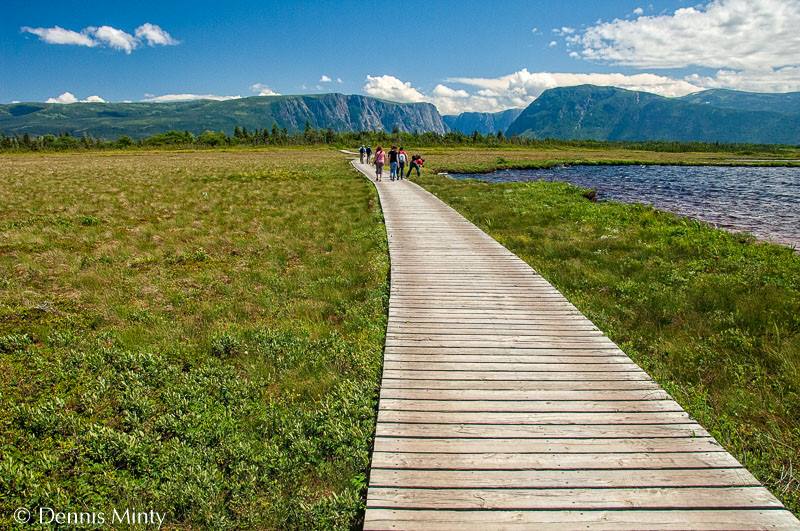
Itineraries by Region & # of Days
< 10 days
Plan your trip in one region. Choose one of Western, Central (north and south) or Eastern and BE there, go slow and get to know the area. By choosing one region so you can have flexibility with activities such as hikes or boat tours.
Here are some itineraries I would recommend;
- 8 Days Along the Viking Trail (Western) *This itinerary makes 10 days once you account for arrival and departure.
- 6 Days Eastern Journey *This itinerary is 8 days once you add arrival and departure days.
- 4 Days In Search of Icebergs, Whales and History + 3 Days South Coast Tour (Central) *This itinerary is 9 days once you add arrival and departure days.
10-15 days
You may now choose two regions to explore, ideally two that are side by side. remember to account for arrival and departure days.
- 13 Days All Around Eastern and Central Newfoundland – Pair 6 Days Eastern Journey + 4 Days In Search of Icebergs, Whales and History + 3 Days South Coast Tour.
- 15 Days Best of Western Newfoundland and Southern Labrador – Combine 4 Days From Port aux Basques to Gros Morne+ 7 Days Staggering Landscapes & Viking History+ 4 Days Labrador’s Expedition 51°- South
15+ days
You have the most freedom to roam the island! Start on one side and slowly make your way to the other. Consider using the Placentia ferry one-way and the Port-aux-Basques ferry one-way.
- 18 Days Colourful Places & Colourful People – Expanded – Ensure you add at least 2 days for seeing L’Anse Aux Meadows, cruising with Northland Discovery Boat tour, hiking at Fishing Point in St.Anthony and marvelling at the Conche Tapestry to this itinerary – since you’re driving all the way up there! Add 2 days for arrival and departure.
Guided Tour Options
- 7 Day Gros Morne Explorer Hiking Tour
- 4 or 5 Day Iceberg Chasing
- 8 Day Viking Trail Experience
- 10 or 14 Day Newfoundland Explorer Tour
Local Etiquette & Customs
Newfoundland has a unique and welcoming culture that visitors should be aware of to fully enjoy their trip. Here are some key aspects to keep in mind:
Language
- English is the primary language spoken, but Newfoundland has a distinct dialect with unique phrases and expressions. Locals may use terms like “b’y” (boy), “some shockin'” (very surprising), and “scoff” (a big meal). Don’t be afraid to ask if you don’t understand something—Newfoundlanders are happy to explain!
Tipping
- Tipping is customary in Newfoundland. At restaurants, it is standard to tip 15-20% of the bill before taxes.
- Hotel staff, tour guides, and taxi drivers also appreciate tips, with $2-5 per service being a common amount.
Social Norms
- Newfoundlanders are known for their friendliness and hospitality. Don’t be surprised if a local strikes up a conversation with you in a store, on a hiking trail, or even while waiting in line.
- Making eye contact and greeting strangers with a friendly “hello” or “how ya gettin’ on?” (How are you?) is common.
- If invited into a local’s home, it’s polite to bring a small gift such as chocolates, wine, or something from your own region.
Driving Etiquette
- Expect a relaxed driving culture. Many people wave as they pass you on rural roads—it’s a friendly gesture, not a signal of trouble.
- Always be on the lookout for moose, especially at dawn and dusk. If a driver flashes their headlights at you, it may be a warning about wildlife ahead.
- Be careful when merging onto the highway as many locals will slow down and even stop in a merge lane! Remember, merge lanes only exist in St.John’s and Corner Brook, so many people don’t use them regularly.
- Please drive slowly through communities as kids are often outside playing in the streets.
Dress Code
- Newfoundland has a casual dress culture, even in many restaurants. Outdoor-friendly clothing is always appropriate, as you never know when the weather will change.
Pub & Music Culture
- Traditional music is a big part of Newfoundland culture. If you visit a pub with live music, don’t be shy about clapping or even joining in the dacning.
- Some pubs practice a “kitchen party” atmosphere, where locals and visitors sing and play instruments together.
Jigs’ Dinner & Other Local Traditions
- If offered “Jiggs’ Dinner,” say yes! It’s a traditional Newfoundland meal of salted beef, cabbage, turnips, carrots, and potatoes.
- “Screeching In” is a fun tourist tradition where visitors take a shot of Newfoundland Screech rum and kiss a codfish while reciting a short pledge—earning the honorary title of a “Newfoundlander.”
Understanding and embracing these customs will enrich your experience in Newfoundland, making your interactions with locals even more enjoyable!
Final Thoughts
Newfoundland is a place that rewards those who embrace adventure and flexibility. Plan your trip with extra time, expect the unexpected, and take the scenic detours. Whether you’re hiking, whale watching, or soaking in the stunning coastal views, this island will leave you with memories that last a lifetime. I hope you found this Newfoundland Travel Guide helpful. Leave your questions or feedback in the comments below!
Don’t forget your Newfoundland Packing List!
Recommended Reads

The Ultimate Guide to Newfoundland Iceberg Season
Welcome to Iceberg Alley, one of the most mesmerizing natural spectacles in Canada. If you’ve ever dreamed of seeing a massive iceberg drift past a rugged coastline, then Newfoundland and Labrador is your dream destination. Whether you’re planning your first iceberg tour or returning for another season, this guide will tell you exactly where to…

The Ultimate Guide to Getting to Newfoundland
Newfoundland and Labrador, Canada’s easternmost province, offers travelers a unique blend of rugged natural beauty, rich history, and vibrant culture. Planning a trip to this captivating destination involves understanding the various transportation options available. Here’s a comprehensive guide to help you navigate your journey to Newfoundland. Ads are how we keep our blog free for…
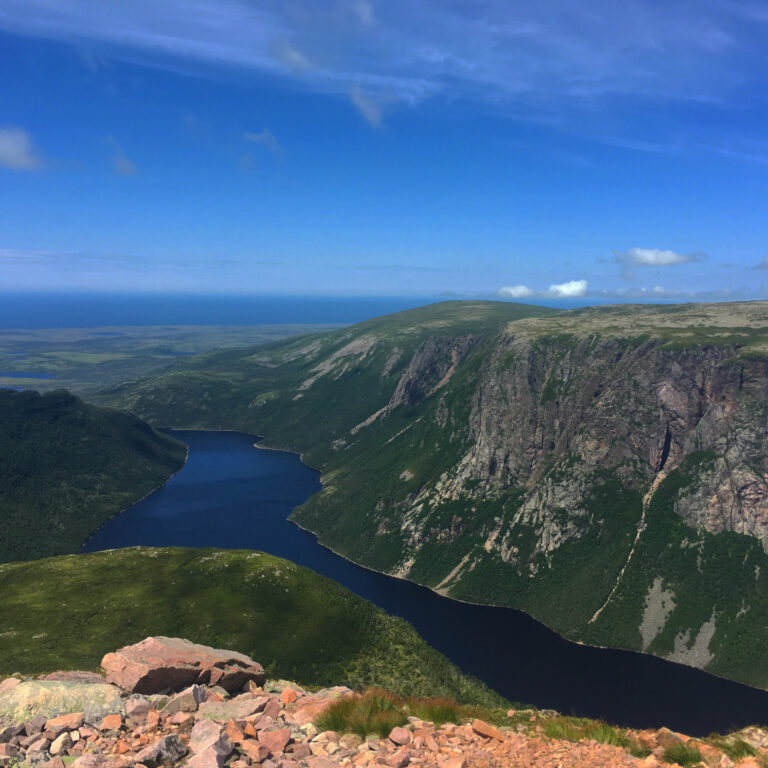
Best Things To Do in Gros Morne National Park, Newfoundland
Gros Morne National Park is a place of breathtaking, rugged landscapes and endless adventure. Located on Newfoundland’s west coast, this UNESCO World Heritage Site is a paradise for hikers, wildlife lovers, and outdoor enthusiasts. Whether you’re trekking through ancient fjords, summiting Gros Morne Mountain, or exploring coastal fishing villages, there’s no shortage of ways to…
